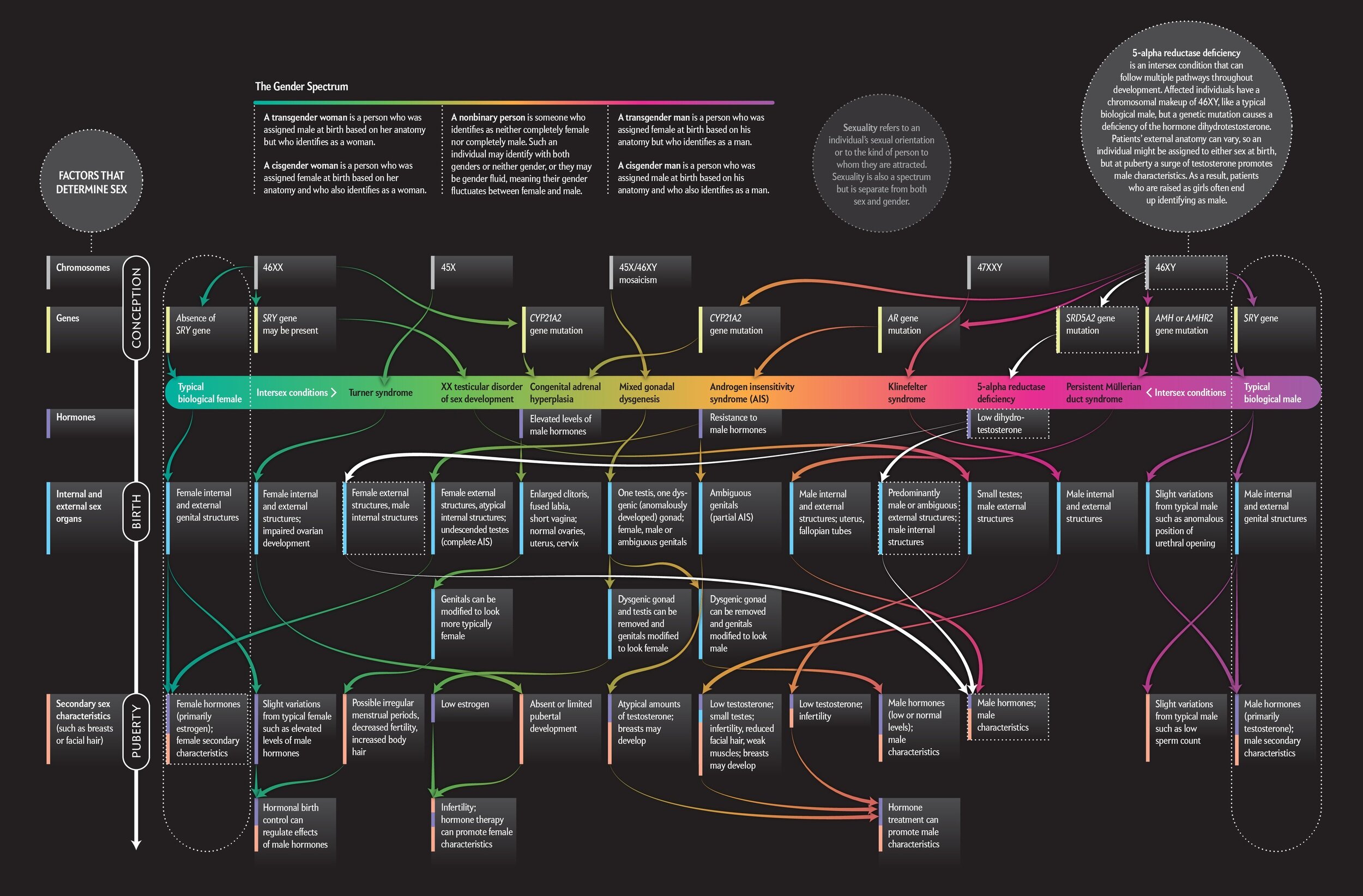Editor’s note: Earlier, the author defines “penis” in this discussion as something the animal can pee through. —RXS
All female spotted hyenas have functional penises. They use it pee, signal, anally mount males & females for dominance, and give birth.
Intersex plumbing is found in ALL females of the spotted hyena (Crocuta crocuta) of Tanzania—in which the females have penises nearly indistinguishable from those of the males. (EN23)…The first scientific investigation in 1939 showed that a spotted hyena makes only one-size gamete throughout its life, either as an egg or sperm. (EN24) Thus these hyenas are not hermaphrodites. Rather, female spotted hyenas are intersexed, like some female bears.
Editor’s note: The term "hermaphrodite" is appropriate for referring to non-human animals with sex characteristics that do not fit typical binary notions of male or female bodies. For humans, “intersex” is the appropriate term—learn more here!
(EN23) L. Frank, 1996, Female masculinization in the spotted hyena: Endocrinology, behavioral ecology, and evolution, pp. 78-131 in J. Gittleman, ed., Carnivore Behavior and Evolution, vol. 2, Cornell University Press; L. Frank, 1997, Evolution of genital masculinization: Why do female hyenas have such a large ‘penis’? Trends Ecol. Evol. 12:58-62.
(EN24) M. Harrison, 1939, Reproduction in the spotted hyena, Crocuta crocuta (Erxleben.), Phil. Trans. Roy. Soc. Lond., ser. B, 230-1-78.
The females have a phallus 90% as long and the same diameter as a male penis (yes, somebody measured, 171 millimeters long and 22 millimeters in diameter). The labia are fused to form a scrotum containing fat and connective tissue resembling testicles. The urogenital canal runs the length of the clitoris, rather than venting from below. The animal can pee with the organ, making it a penis. Completing the picture, the female penis contains erectile tissue (corpus spongiosum) that allows erections like those of a male penis.
Sex & reproduction with two penises is as costly as pre-Industrial human reproduction, so why has this survived so long? (book excerpt)
A female spotted hyena mates and gives birth through her penile canal. When mating, a female retracts the penis on itself, ‘much like pushing up a shirtsleeve,’ and creates an opening into which the male inserts his own penis. The female’s penis is located in the same spot as the male’s penis, higher on the belly than the vagina in most mammals.
Therefore, the male must slide his rear under the female when mating so that his penis lines up with hers. During birth, the embryo traverses a long and narrow birth canal with a sharp bend in it. About 15% of the females die during their first birth, and they lose over 60% of their firstborn young. (EN 25) These obvious disadvantages lead us to question why female spotted hyenas have this penis instead of a clitoris.
(EN25) L. Frank and S. Glickman, 1994, Giving birth through a penile clitoris: Parturition and dystocia in the spotted hyena (Crocuta crocuta), J. Zoology London 206:525-31; L. Frank, M. Weldele, and S. Glickman, 1995, Masculinization costs in hyenas, Nature 377:584-85.
Erect hyena penises are a sign of submission; the female hyena without the erect penis is the dominant leader of the entire pack. (book excerpt)
Female spotted hyenas have a dominance hierarchy, and the erect penis is a signal of submission. When two females interact with each other in a struggle for dominance, the one who wants to back down signals by erecting her penis. (EN26) No one knows why female hyenas evolved this method of signaling.
(EN26) M. East, H. Hofer, and W. Wickler, 1993, The erect “penis” is a flag of submission in a female-dominated society: Greetings in Serengeti spotted hyenas, Behav. Ecol. Sociobiol. 33:355-70; H. Hofer and M. East, 1995, Virilized sexual genitalia as adaptations of female spotted hyenas, Revue Suisse de Zoologie 102:895-906.
Erections occur in the “meeting ceremony” when animals greet after having been apart. The animals approach each other and stand alongside one another, head-to-tail, one or both lifting her hind leg to allow inspection of her erect penis. When only one member of a greeting pair displays an erection, she is normally the subordinate.
Each hyena puts her reproductive organs next to powerful jaws. Greetings between captive females that have been separated for a week are tense and frequently wind up in a fight that starts when one bites the genitals of the other, doing occasional damage to the reproductive capability of the injured party.
[This] social-inclusionary trait…allows a female hyena access to resources needed for reproduction and survival. If a female were not to participate in social interactions using her penis for signaling, she would not be able to function in hyena society and presumably would either die or fail to breed.
[Testosterone from elevated aggression in hyena society can’t develop] a full-fledged replica of male genital anatomy, complete with scrotal sacs and fat bodies resembling testicles. This structure can’t develop from a few extra splashes of testosterone in the blood.
Citation: Roughgarden, J. (2013) Evolution’s Rainbow: Diversity, Gender, and Sexuality in Nature and People. University of California Press, Berkeley. pp. 138-39.























